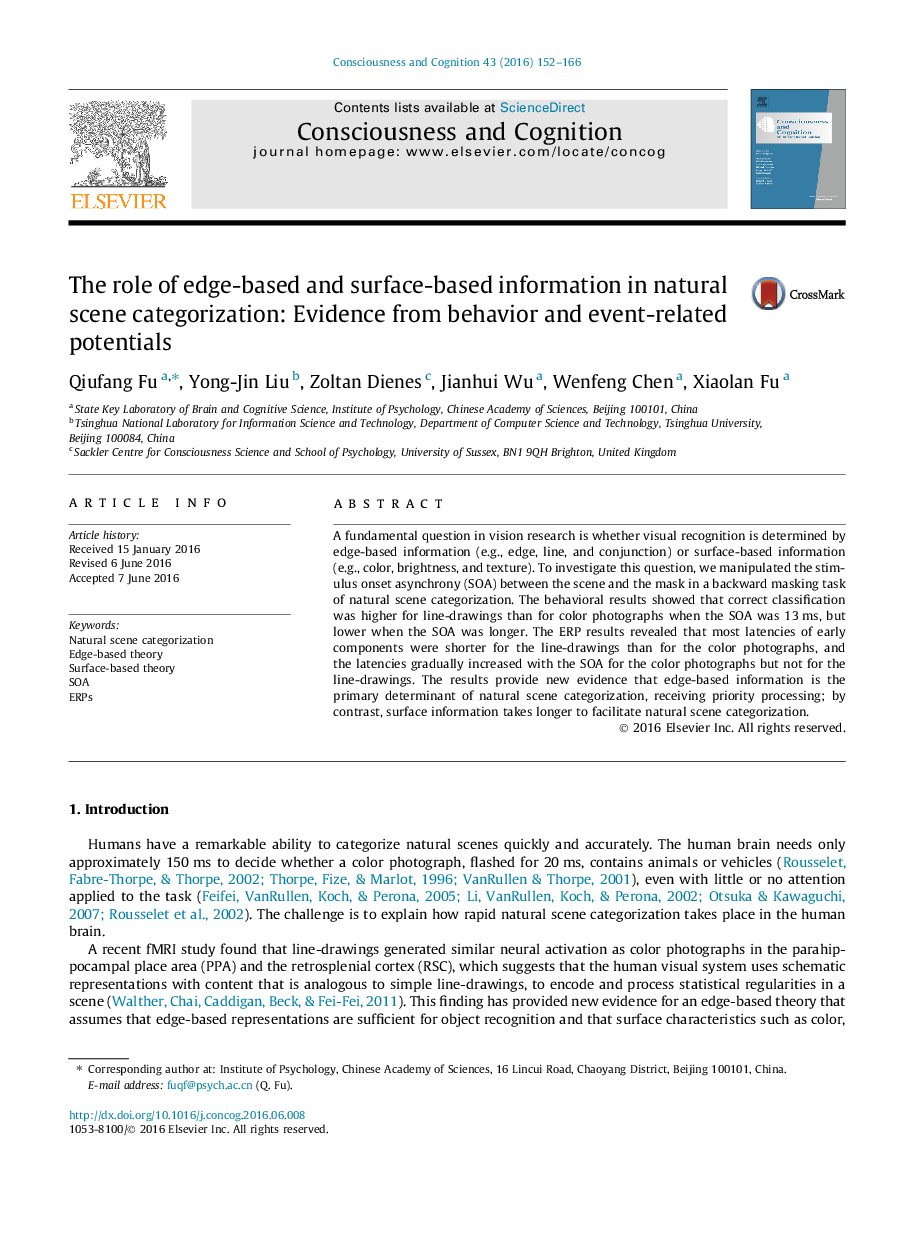| Article ID | Journal | Published Year | Pages | File Type |
|---|---|---|---|---|
| 7288348 | Consciousness and Cognition | 2016 | 15 Pages |
Abstract
A fundamental question in vision research is whether visual recognition is determined by edge-based information (e.g., edge, line, and conjunction) or surface-based information (e.g., color, brightness, and texture). To investigate this question, we manipulated the stimulus onset asynchrony (SOA) between the scene and the mask in a backward masking task of natural scene categorization. The behavioral results showed that correct classification was higher for line-drawings than for color photographs when the SOA was 13Â ms, but lower when the SOA was longer. The ERP results revealed that most latencies of early components were shorter for the line-drawings than for the color photographs, and the latencies gradually increased with the SOA for the color photographs but not for the line-drawings. The results provide new evidence that edge-based information is the primary determinant of natural scene categorization, receiving priority processing; by contrast, surface information takes longer to facilitate natural scene categorization.
Related Topics
Life Sciences
Neuroscience
Cognitive Neuroscience
Authors
Qiufang Fu, Yong-Jin Liu, Zoltan Dienes, Jianhui Wu, Wenfeng Chen, Xiaolan Fu,
